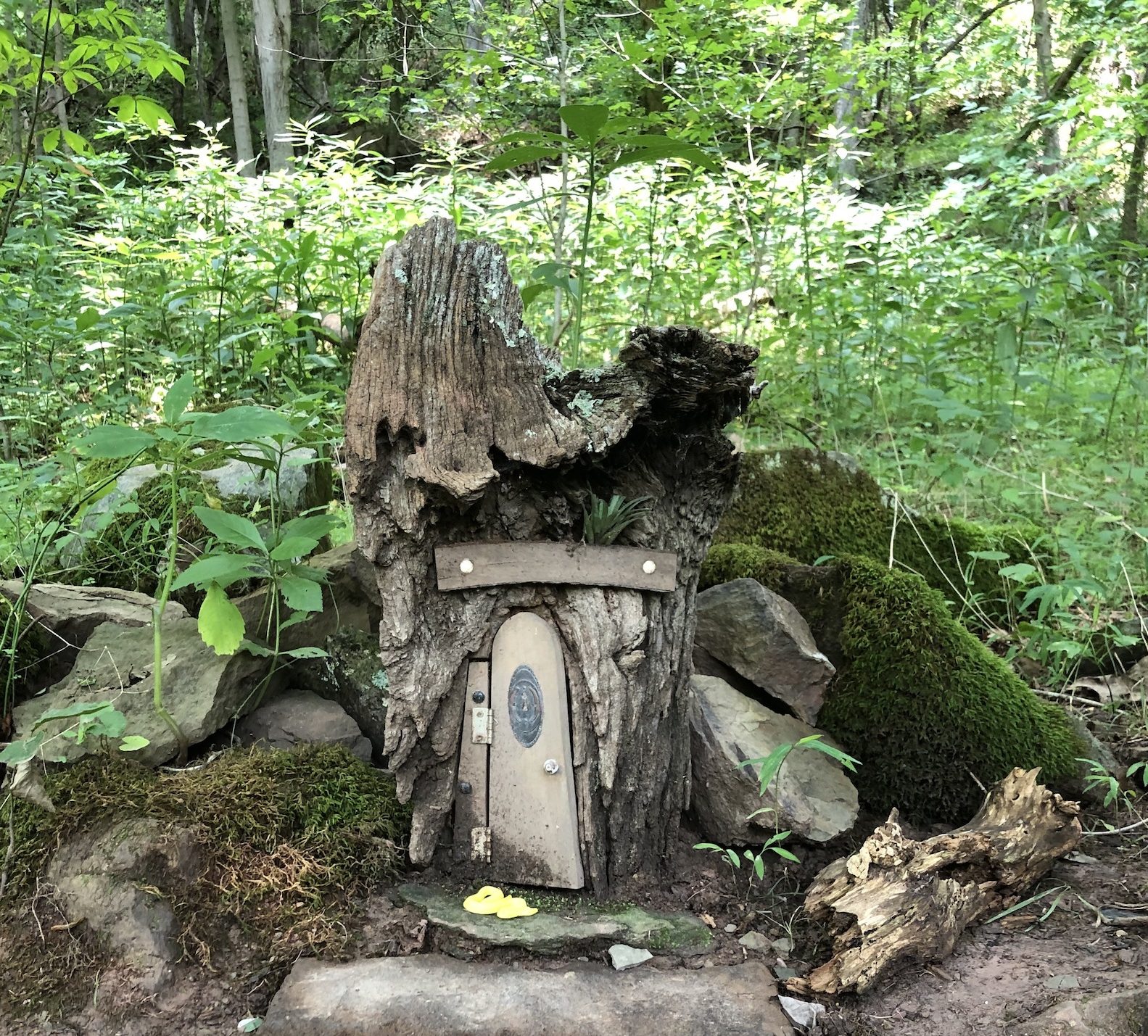This story is part of Grist’s Summer Dreams arts and culture series, a weeklong exploration of how popular fiction can influence our environmental reality.
You would not expect to find fantasy in Mason-Dixon Historical Park, a modest 295 acres straddling the border of Pennsylvania and West Virginia. From the parking lot, it seems like your standard, quiet sort of family pitstop, with picnic pavilions and a baseball field. But just beyond the first sun-drenched hillside, past the bend of a storm-swollen creek the exact color and consistency of chocolate milk, tiny, brightly colored abodes punctuate the Appalachian landscape. A fairy village.
The concept of a “fairy house” — often appearing as a small door affixed to the base of an obliging rock or tree stump — is a little odd, when you think about it. Why would fairies need to live like humans at all? Why not just sleep in the crook of this oak branch tonight and atop that smooth rock in the middle of a babbling brook tomorrow? Eat all your meals from the bowl of a buttercup? But of course, these diminutive dwellings have been designed with the human eye in mind — an enticement for us mere mortals to venture into the wild and rediscover our love for nature.
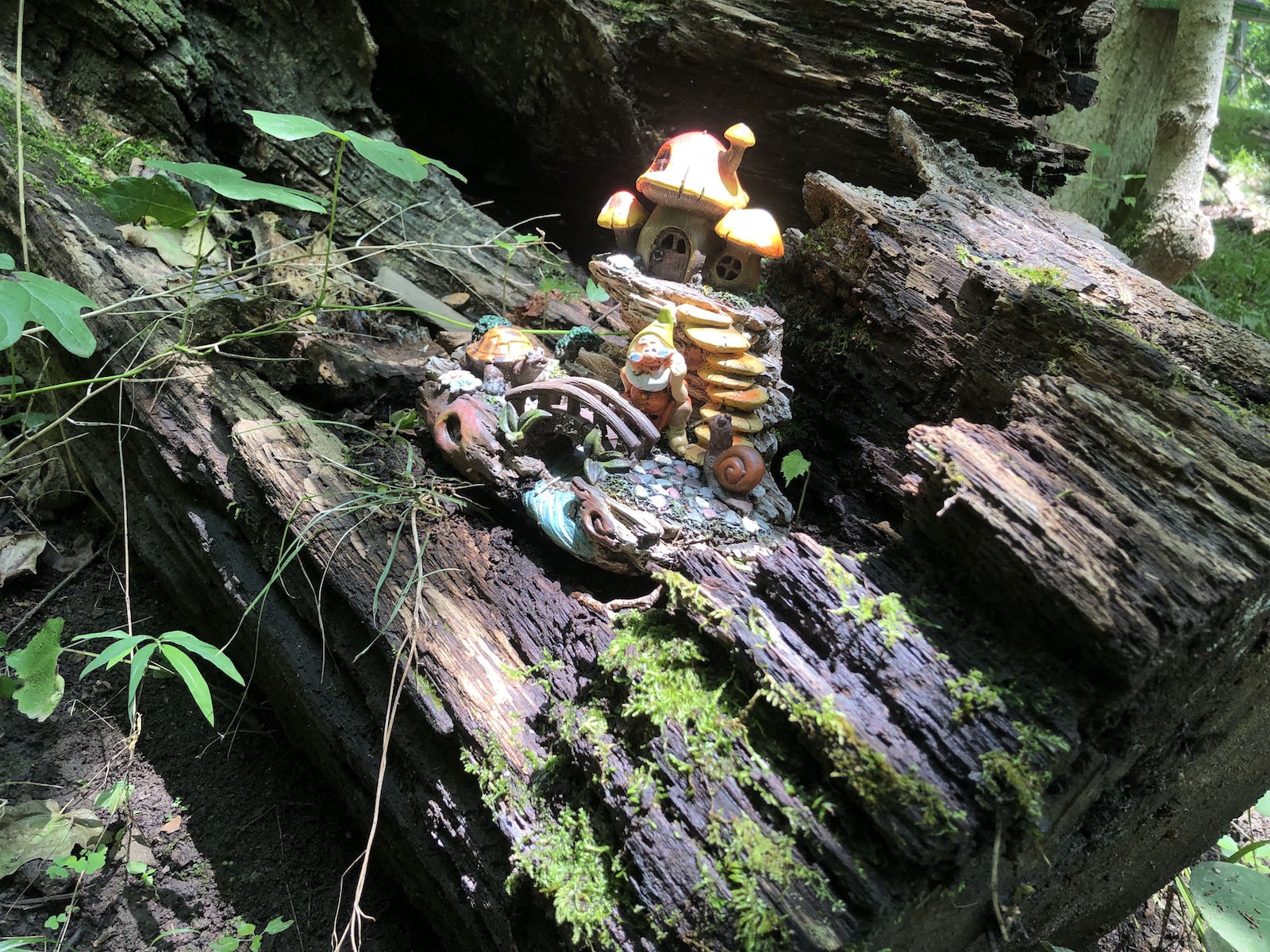
I sought out that particular fairy forest on the kind of wet, heavy, hot July day that immediately makes sweat bead and glisten on your forehead and arms. Shortly after stepping out of my car, I could feel bugs on my skin, not even biting, just getting stuck in the damp. All around me, everything was green; even the heavy air seemed to carry an emerald sheen. As I proceeded damply down the path, lined with painted mushroom doors and bunk beds fashioned from old card catalog drawers, I felt oddly transported to an oft-imagined childhood setting: FernGully.
For anyone who didn’t happen to be a girl of sleepover age in the 1990s, FernGully was an animated movie about a community of rainforest-dwelling fairies that finds themselves endangered by a team of loggers that comes to chop down their home (a classic piece of environmentalist propaganda). The loggers’ machinery is possessed by a malevolent oil-puddle named Hexxus, who is sort of the embodiment of evil industrial pollution. Anyway, the fairy protagonist, Crysta, magics a particularly hunky logger down to fairy-size. They fall in love, and they lead the fairies’ charge against Hexxus and all of industrial development.
My two best friends and I adored FernGully, albeit for slightly different reasons. My friend Natalia loved the David-versus-Goliath triumph of nature over industry. My friend Justine loved the beauty of the fairy world. If I’m being honest, I probably loved the hot logger love story. But what all three of us loved, and tried to manifest in the green spaces we could find in our own city-dwelling lives, was the idea that there was so much life in the world of trees and brooks and rock formations that we couldn’t even see all of it. And maybe, if we spent enough time making ourselves at home in the woods, we’d catch a glimpse of the supernatural.
FernGully’s overarching message was clear: Fairies are good, nature is good, and industry is bad. Humans can be good or bad, depending on whether they choose nature or industry. And yet, humans’ relationship with fairy lore has not always been so pro-nature or so anti-technology. It is only in recent years that our shifting ideas about natural spaces have recast the fair folk as staunch defenders of the forest.
The tradition of fairy lore, as it originated among the Celts in the British Isles, often served as a way for humans to add an element of mysticism to the dangers associated with the landscapes they inhabited. Keep out of these dense woods, because a fairy might steal you away; stay away from this swamp, where fairies are frequently up to mischief; this mountain path is known to be haunted by demonic fair folk.
Those “scary” fairy myths may have perpetuated the idea over generations that the wilderness was something for man to tame and conquer. But some scholars argue that the awe instilled by fairytales can also work in favor of protecting ecosystems. In an article for the journal ECOS, ecologists Patrick LaViolette and Alastair McIntosh wrote that “tradition-bearers saw the fairies as mediators between many things, not least nature and humanity.” They argue that, in the way that human reverence for sacred groves in East Asian countries have been very effective in conserving biodiversity in those areas, the same traditions around fairy lore could serve a conservation purpose in the woods and moors of the United Kingdom.
It’s tempting to write off fairies as mere human inventions, stories our peasant ancestors made up to explain nature or death or any other vast, unknowable aspect of life in the country. But the anthropologist W.Y. Evans Wentz, who spent months studying the culture of Celtic fairy tradition around the British Isles at the beginning of the 20th century, somewhat bristled at this academic explanation, insisting that the culture of Fairydom should be studied “sympathetically as well as scientifically.”
Of urban skeptics of the existence of fairies, he wrote:
“Are city-dwellers like these, Nature’s unnatural children, who grind out their lives in an unceasing struggle for wealth and power, social position, and even for bread, fit to judge Nature’s natural children who believe in fairies? Are they right in not believing in an invisible world which they cannot conceive, which, if it exists, they — even though they be scientists — are through environment and temperament alike incapable of knowing? Or is the country-dwelling, the sometimes “unpractical” and “unsuccessful,” the dreaming and “uncivilized” peasant right?”
Even in 1911, there existed a healthy cultural animosity between rural and urban residents! Despite his academic credentials, Wentz insisted on honoring the British provincial belief that a fairy world existed, and bristled at the idea that such an opposition had to exist between science and fantasy. Likewise, the supernatural protagonists of fairy stories are nowhere near as black and white in their principles or affinities, blending the lines between helpful and dangerous, urban and rural, natural and unnatural.
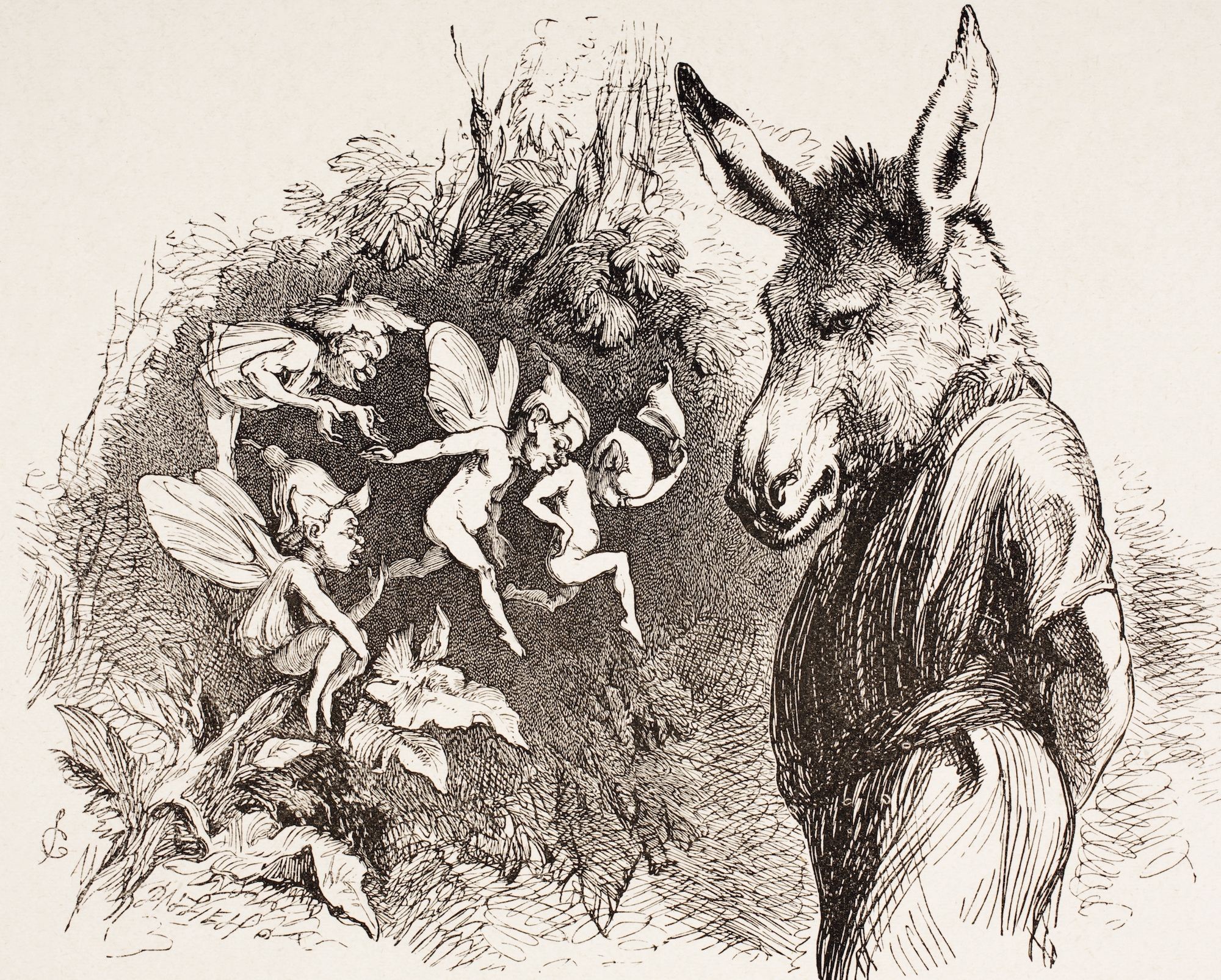
The realm of fairies is widely considered to be subterranean, lurking just below the ground’s surface, which parallels the sort of ambiguous moral space they’re meant to occupy, according to Tyler Chadwell-English, a West Virginia-based folklorist. “Present-day American beliefs exist in a binary of good and evil,” he said, “whereas older beliefs, in the Celtic tradition, didn’t believe that supernatural beings were good or evil. They were tricksters, with pranks and mischief; or they could warn humans of impending doom.”
Nor were all fairies supposedly relegated to green glades. British miners who immigrated to Appalachia in the 1800s brought with them stories of “tommyknockers,” which are fairies that dwell in coal mines, and come predominantly from the Welsh “coblynau.” They would be closer to goblins, as described by the British writer Wirt Sikes in 1880:
The coblynau are described as being about half a yard in height and very ugly to look upon, but extremely good-natured, and warm friends of the miner. Their dress is a grotesque imitation of the miner’s garb, and they carry tiny hammers, picks and lamps. They work busily, loading ore in buckets, flitting about the shafts, turning tiny windlasses, and pounding away like madmen, but really accomplishing nothing whatever.
West Virginia’s own fairy mythology is similarly entrenched in its coal-rich history. As the most mountainous state in the East, its protected hollows and jagged ravines delayed a lot of development and modernization that came more quickly to its neighbors in Pennsylvania and Virginia. And as one of the richest in coal deposits, it became a destination for thousands of immigrants eager to work in the mines. They brought their fairy-filled stories with them, and found they fit in well with this new, wild land.
The practice of coal mining is well-known to come with superstition, because it’s dangerous, nether-world work. Miners would historically leave offerings for tommyknockers to keep in their good graces, and hopefully be warned of impending collapses or fires. Like other fairy stories, the tales of tommyknockers served a human purpose, giving miners and their loved ones a way to make sense of luck or tragedy that could befall those who went digging around in the mountains.
Knowing what we do now about the incredible destruction that the coal industry has done to both Appalachian ecosystems and the atmosphere as a whole, it’s difficult to imagine the existence of a coal fairy in the same universe as the kind that frolics in FernGully-esque forests. But coal seams are just as much a part of the land that Appalachians wanted to make sense of with supernatural beings and magical tales.
“The land itself in Appalachia, and especially West Virginia, has a persona. It’s a part of our character, our daily lives, and it has an aesthetic,” explains Chadwell-English. “And people respond to that in many different ways. Some of those are in paying tribute, some are in attributing spiritual elements to it, but at the end of the day, there is a living breathing spirit to the land itself.”
The purpose of fairies and the stories we tell about them has shifted over time to fit our needs as our relationship with nature has changed. Where there used to be need for caution, there is now a longing for communion, and the presence of fairies isn’t used as a way to keep humans out so much as to bring them in.
The Mason-Dixon Park fairy houses started as a tipsy idea among a group of artist friends, according to J.R. Petsko, director of the Monongalia County Parks, inspired by a similar project in Orange County, California. They were looking for a project to get them through the cold, dull West Virginia winter months, but also for a way to bring some delight and wonder in the pockets of nature that surround their community. The trail opened in spring 2019, but its popularity exploded over the past year, with more people anxious to get out of the house. Park attendance is up threefold, pretty much entirely due to the fairy houses.
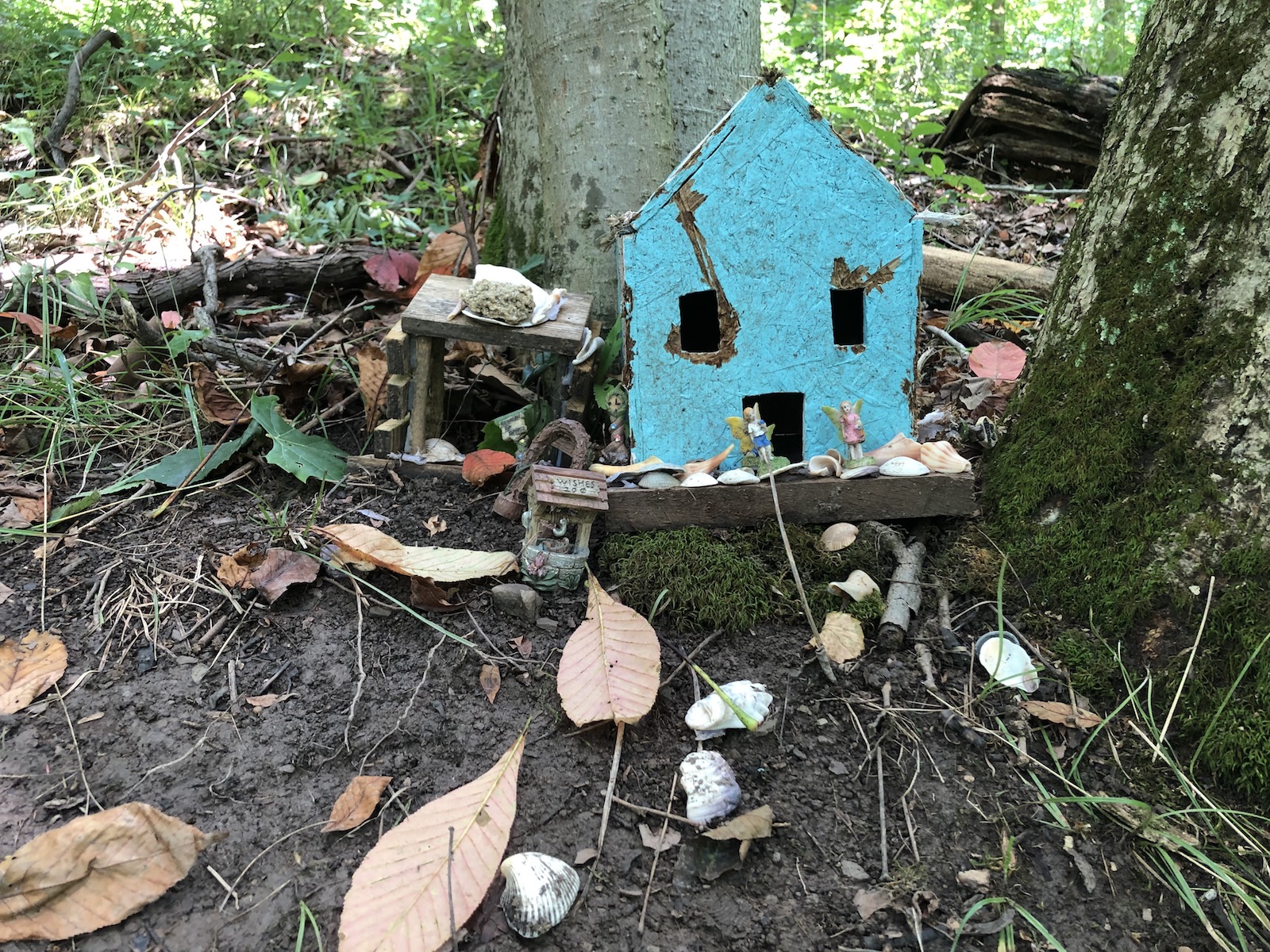
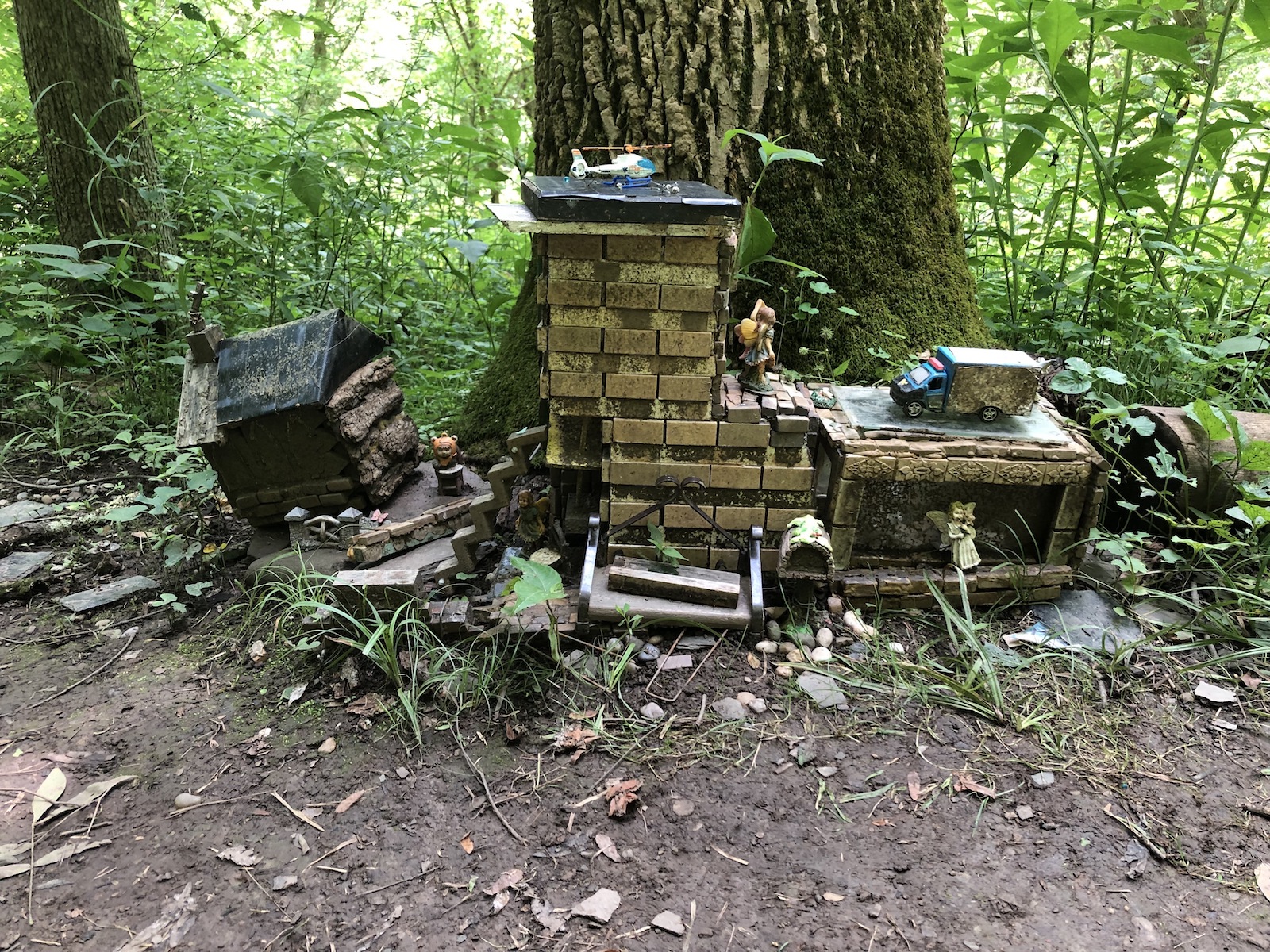
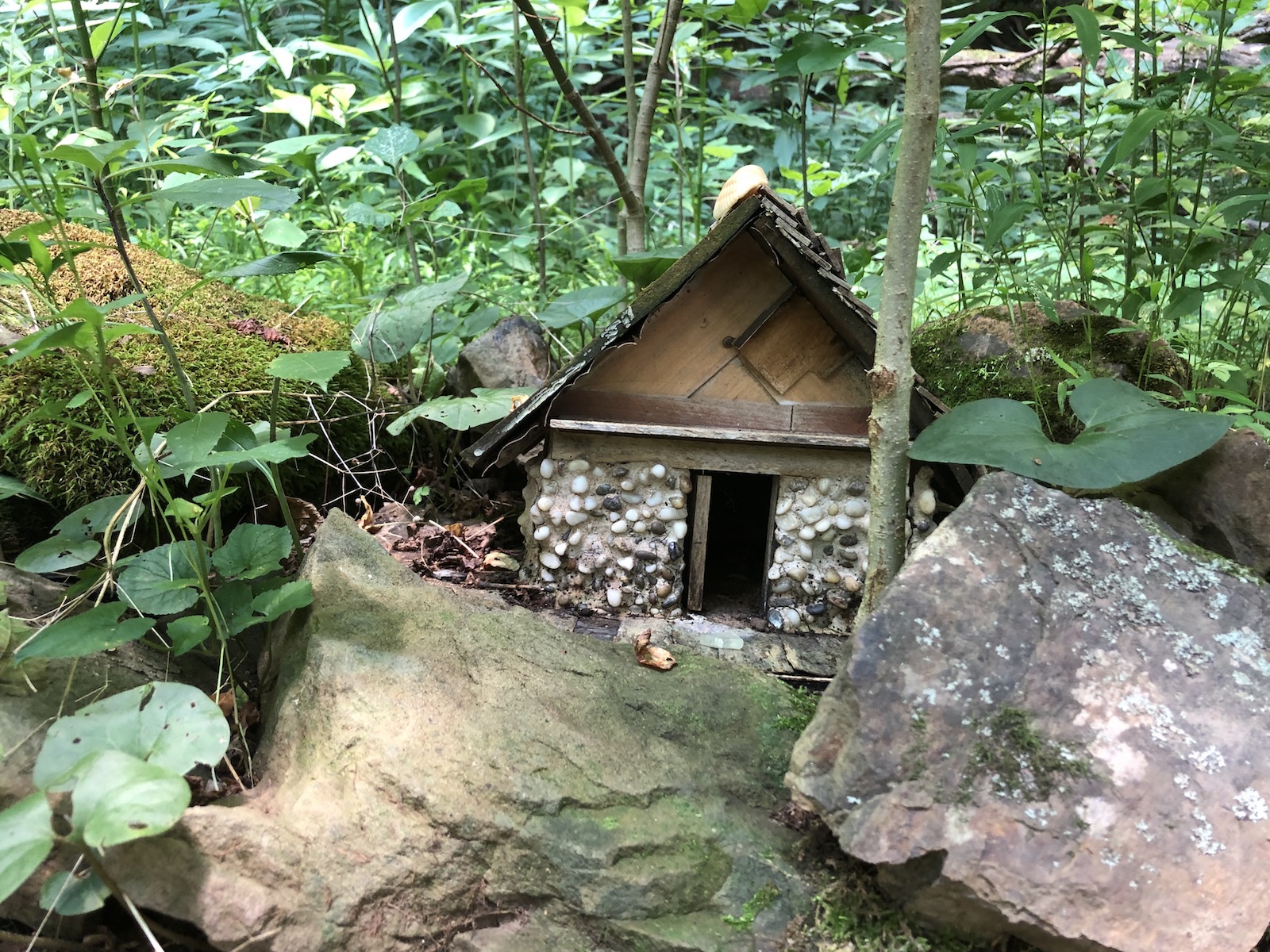
Fairy houses in Mason-Dixon Park. Photos by Grist / Eve Andrews.
The stretch of fairy houses is intentionally set a ways back from the entrance to the park; you have to walk 15 minutes or so through the woods to reach them. “You know, before COVID, a lot of people had lost touch with nature, and we were trying to reintroduce it softly to them, without smacking them in the face,” Petsko said. “Half-mile walk, get a little exercise. When I’m out in nature it kind of refreshes my brain. I hope other people are getting the same benefit.”
Before Monongalia County designated the land as a park, it was farmland that had been heavily drilled for oil and gas, with the last well plugged around the 1970s. You can still see the old drilling infrastructure up on the ridge of the park, overlooking the sloping hills. If you were to dig further under the foundations of the fairy houses, you would find the remains of an old coal mine. The entire region sits on top of a complex patchwork of mines that have been dug, excavated, and shuttered over the past two and a half centuries.
Even some of the fairy houses themselves seem to embody this contradictory mix of human and inhuman influence: Here, a sprite-sized tire swing; there, a mini 18-wheeler and doll-sized sports cars. One fairy house even had a mini helicopter pad.
In that way, the fairy park in Monongalia County is a bit like a real-life FernGully in reverse. In spite of a gravel parking lot and a frowning teenager driving a lawnmower over the grassy mountain bike trails nearby, the fairy path feels oddly removed from the rest of civilization. What was once a mess of oil, gas, and coal extraction is green again, barring the occasional coal runoff algae bloom in Dunkard Creek; where men pulled fossil fuels out of the ground is now home to fairies.
Who is to say if they’re real or not? Haven’t they already done magic?

